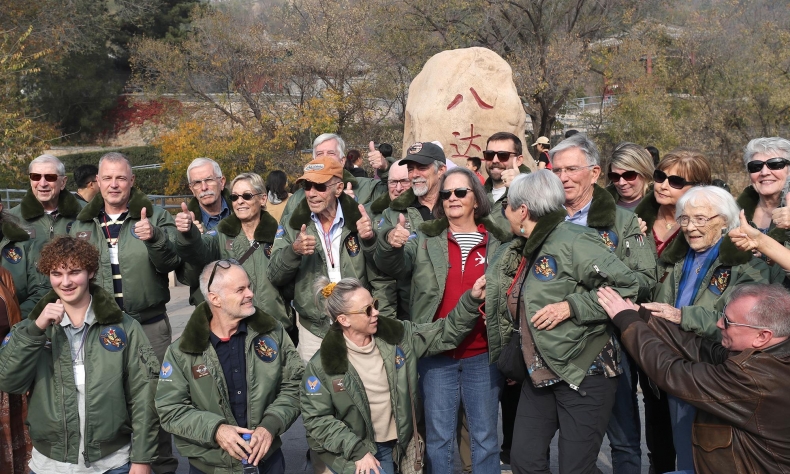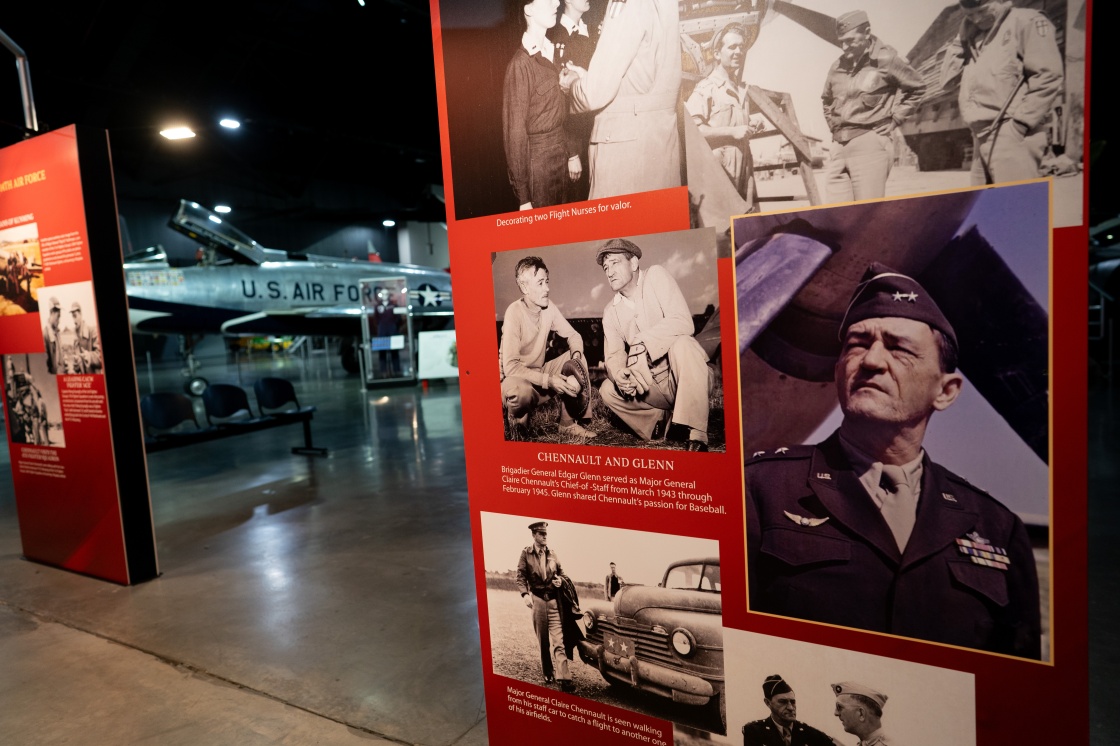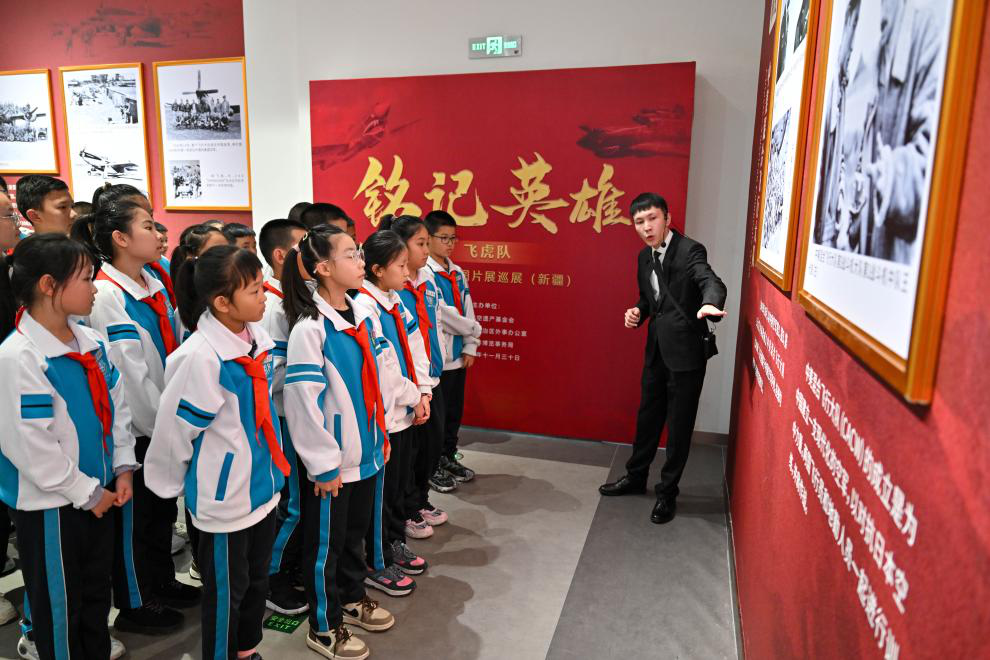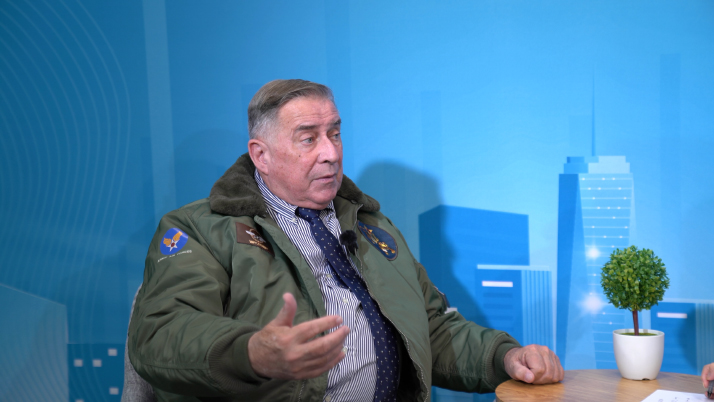Allies in the Skies: The Growing Legacy of the Flying Tigers

The legacy of the Flying Tigers is not just a chapter in history, it is a bridge between two nations.
Jeffrey B. Greene, Chairman of the Sino-American Aviation Heritage Foundation, is a historian and documentary filmmaker who has spent decades uncovering the shared wartime history of China and the United States during World War II (WWII). In a conversation with Liu Yunyun, Associate Editor in Chief of Beijing Review, Greene reflected on his commitment to preserving the legacy of the Flying Tigers, U.S. airmen who helped Chinese people in their fight against Japanese invaders during WWII, and how their enduring spirit can serve as a bridge for mutual understanding between the two peoples, especially the youths of both nations. Edited excerpts from the interview follow:
Jeffrey B. Greene
Beijing Review: As chairman of the Sino-American Aviation Heritage Foundation, could you describe the primary mission of the organization? How did its founding come about, and what were the key circumstances and opportunities that led to its development?
Jeffrey B. Greene: The Sino-American Aviation Heritage Foundation has been active for over 30 years. I come from a military background, having trained as a pilot in the U.S. Marines in the 1970s. My passion for aviation and military history eventually led me to documentary filmmaking. It was through this work that I was invited to accompany surviving members of the American Volunteer Group (AVG), the original Flying Tigers, on a visit to China in 1998.
The name Flying Tigers has a particularly powerful origin. On December 20, 1941, 13 days after Pearl Harbor, 10 Japanese bombers launched from Hanoi, capital of Viet Nam, to attack Kunming, the capital of Yunnan Province in southwest China. At that time, Kunming had been regularly bombed, resulting in significant civilian casualties. But this time, General Claire Lee Chennault (1893–1958) and his AVG pilots were prepared. Sixteen American fighters engaged the bombers, shooting down several and forcing the others to retreat.
The residents of Kunming were astonished. In Chinese mythology, a flying tiger symbolizes invincibility and immortality. That morning, locals began referring to the AVG as the Feihudui—Flying Tigers. The name endured and came to symbolize not just the original volunteers but all American airmen who served in China during the war.
During the visit in 1998, in partnership with Chinese media, we produced a landmark documentary on the Flying Tigers. It featured interviews with then U.S. President Bill Clinton and aired on China Central Television. To this day, it remains one of the most-viewed documentaries on the subject in China. Our work has continued ever since, focused on preserving and promoting the legacy of the Flying Tigers as a testament to the historic partnership between China and the United States.

What impact did the Flying Tigers have during WWII? And what aspects of their story have inspired or touched you the most?
The Flying Tigers played a crucial role in sustaining China’s resistance during WWII. By defending strategic cities and vital supply routes, they helped prevent Japanese forces from overwhelming Chinese defenses. One of the most dangerous yet essential missions was flying over the Himalayas—a route known as The Hump—to deliver supplies into China. Tragically, more American pilots lost their lives on these flights than in direct combat.
In total, more than 3,000 American airmen lost their lives while serving in China. Their sacrifice was instrumental in ensuring that key cities such as Kunming and Chongqing remained out of Japanese control.
Another notable example was the Doolittle Raid in 1942—a U.S. air operation against Japan. Due to fuel shortages and communication challenges, many of the American pilots involved were forced to parachute into Chinese provinces such as Jiangxi and Zhejiang. They were rescued by local civilians and military forces, often at great risk to those who helped them. This profound act of solidarity during wartime helped forge a deep and lasting bond between the people of China and the U.S.
When I first met the veterans in 1995, there were still about 20 pilots from the AVG and approximately 30 ground crew members alive. Over time, they welcomed me into their circle—perhaps because I had once been a pilot myself. In 1998, we formalized our efforts by establishing the Sino-American Aviation Heritage Foundation to more widely share their remarkable stories.
Our mission has since expanded to include other groups who served in China, such as the Hump pilots, the 14th Air Force and the China Air Task Force. To date, we’ve brought more than 500 veterans back to China, giving them the opportunity to revisit cities like Kunming and Guilin where they had once fought. These visits were profoundly emotional, often awakening vivid memories. Today, only about five Flying Tigers are still with us, including a few nurse veterans, but their legacy endures.
When we visited China accompanied by veterans and their descendants in October 2023, there was something I consistently observed. As they looked out at the airports, the high-speed railways and the modern cities, they wear a certain expression. At first, I couldn’t quite place it. But over time, I came to realize: It was pride.
What they see in today’s China reminds them of the sacrifices they made eight decades ago. They recognize that their efforts contributed, in some small but meaningful way, to the foundations of modern China. That sense of contribution, of having played a role in shaping the future, fills them with pride. They are proud of what they helped to defend and what it has become.

The foundation launched a project called the Flying Tigers Friendship School. Could you tell us more about this initiative? What do you hope to achieve through the foundation’s work today?
As the number of surviving veterans has diminished, we recognized the need to ensure their legacy lives on. This realization led to the creation of the Flying Tigers Friendship School and Youth Leadership Program. Today, the initiative includes around 70 schools in China and 30 in the United States.
In November 2023, during the Asia-Pacific Economic Cooperation Economic Leaders’ Meeting in San Francisco, Chinese President Xi Jinping met warmly with me, my wife, and Flying Tigers veterans and their families. At that event, our educational exchange initiative—the Flying Tigers Friendship School and Youth Leadership Program—was officially included as part of China’s initiative to invite 50,000 American youth to visit and study in China over the next five years.
Our mission is clear: to educate the next generation about the historical bonds between China and the United States and to inspire mutual respect and friendship. President Xi has expressed strong support for our efforts, emphasizing the importance of nurturing Flying Tigers of the future.
We facilitate student exchanges through the programs. Last summer, we brought 70 American students to China, and this year, we expect that number to grow to around 400. While bringing Chinese students to the U.S. presents some visa challenges, we are committed to expanding this exchange in both directions. The Flying Tigers symbolize a pivotal moment in history when Americans and Chinese stood united. In today’s complex global landscape, their story offers a powerful example of cooperation and shared values.
What’s more, once American students learn about the Flying Tigers and visit key historical sites in China, their interest and enthusiasm quickly match that of their Chinese peers. We often remind Chinese students that it was their ancestors who first coined the name Flying Tigers, a fact that creates a powerful personal connection. American students, in turn, often return home feeling like ambassadors—eager to share what they’ve learned and experienced.
We keep this legacy alive through touring photo exhibitions, student programs and public education efforts. Many of the photographs in our collection were donated by veterans themselves, along with personal stories that provide invaluable historical insight. The legacy of the Flying Tigers is not just a chapter in history, it is a bridge between two nations.
 Facebook
Facebook
 Twitter
Twitter
 Linkedin
Linkedin
 Google +
Google +











